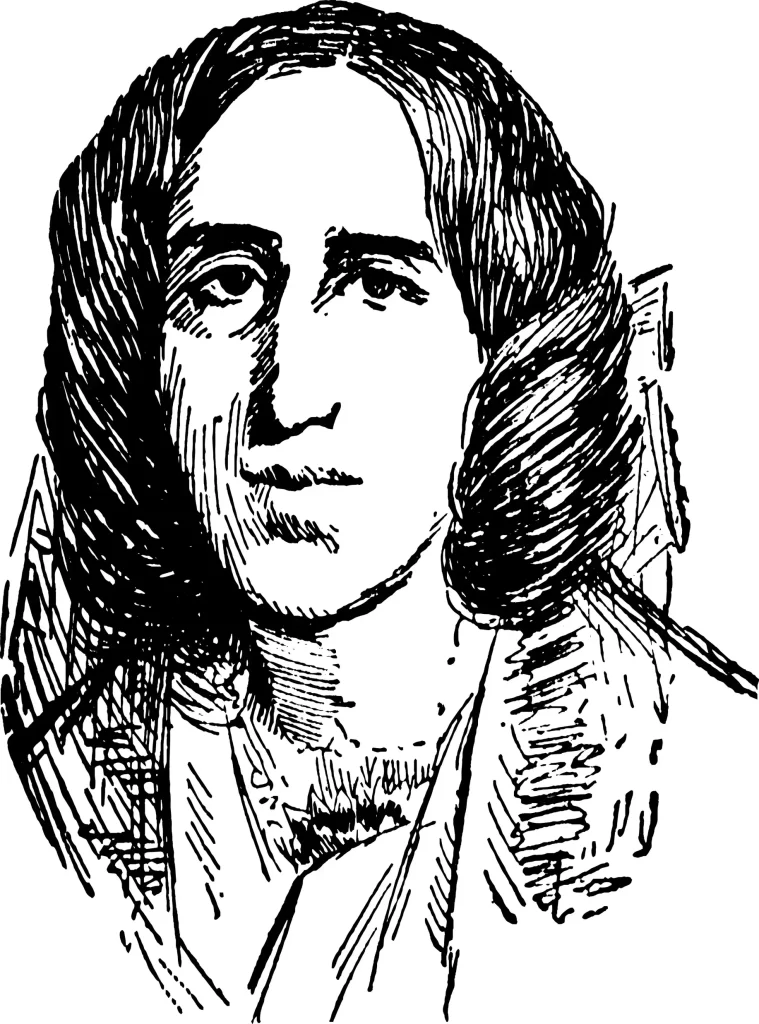Introduction
Mary Ann Evans, Robert and Christina’s youngest child, was born in Warwickshire in 1819. Mary Ann was pious as a child and adolescent due to her upbringing and Miss Lewis’s influence as her boarding school’s “principal mistress” from 1828 to 1832.
Life
Mary Ann Evans has read since childhood. Due to her love of books and intellect, her father spent a lot of money on her education, despite his business philosophy.
Her father Robert Evans had a company, while her mother Christiana Evans stayed home.
Mary Ann managed her father’s home when her mother died and her sister married. Mary Ann and her father moved to Coventry after her brother Isaac married and acquired the house in 1841.
As her intellectual horizons broadened in the city under Charles Hennel and Charles Bray, the young woman’s faith waned.
She also wrote reviews and pieces for a Bray-edited journal.
Mary Ann cared for her crippled father until his death in 1849, who strongly opposed her new religion.
She became Chapman’s Westminster Review’s assistant editor in 1851. Via Spencer, she met divorced theatre critic and writer George Henry Lewes. After being unable to divorce, Lewes and Mary Ann defied social norms and stayed married.
Until Lewes’ death in 1878, the couple lived together legally but not otherwise.
Two years after marrying J. W. Cross, Mary Ann died on December 22, 1880.
George Eliot’s legacy will help future generations.
Her books, short tales, and poems impacted many people and sparked debate on women’s role in a patriarchal culture and her courage in standing up for her beliefs in Victorian times.

George Eliot
Major Works
Like many other writers, Mary Ann Evans’ writings are influenced by her views and experiences from life. She frequently depicts lovely rural landscapes in her literature, highlighting both their positive and terrible elements, as seen in works like among other books, The Mill on the Floss.
She has captured the true character of the little, rural towns that are frequently viewed as glorified. In addition, she challenged conventional patriarchy with her book Mill in the Floss, which inspired fresh perspectives. Her writings also reveal her unusual political, religious, and scientific ideas for the time period.
Her realistic and feminist viewpoint garnered the admiration of many writers and reviewers of the period, as well as later commentators who unknowingly lauded her as a masculine author.
In the 1858 novel Scenes of Clerical Life , a collection of three sketches with a rural location, is praised for its skillfully rendered Midland dialect and well-drawn characters.
In the 1859 novel Adam Bede offers realistic depictions of ordinary country life that are undermined by unfulfilled love and greed, leading to tragic events and fought-for self-knowledge.
In 1860 novel The Mill on the Floss chronicles Maggie Tulliver’s struggle to fit in with her strict, traditional culture.
The 1861 novel Silas Marner centres on a miserly, estranged character whose life is changed by the adoption of an orphan.
With the historical novel Romola (1863) and Felix Holt (1866), which is frequently categorised a political novel, although it has a typical love plot more typically associated with domestic fiction, Eliot expanded her thematic aims.
Middlemarch, often regarded as Eliot’s crowning effort, develops moral and philosophical ideas like the link between the individual and society while providing a complete portrait of English provincial life.
Eliot’s final book, Daniel Deronda (1876), is regarded as her most ambitious but possibly least effective work. It explores a wide range of nineteenth-century European society.
Conclusion
She did such a good job of fictionalising her concepts in her works that writers still want to emulate her today. Although there are still detractors, fiercely split about Eliot’s depiction of women’s difficulties, the emergence of the feminist movement inspired a new examination of the author’s work.
Frequently Asked Questions
1. What is George Eliot’s greatest work?
Ans. The eight-part Middlemarch (1871–1872) is often regarded as George Eliot’s best work. The novel had changed under her direction from a simple work of pleasure to a highly sophisticated work of art.
2. Who is one of George Eliot’s primary characters?
Ans. Eliot’s first book, Adam Bede, was an immediate bestseller when it was published in 1859. The story of the main character, a labourer who yearns for a young woman named Hetty Sorel, is told in this book, which is set in the rural town of Hayslope.
3. Which major themes appear frequently in TS Eliot’s poetry?
Ans: Eliot uses the symbolism of the waste land, garden, lake, city, stairs, etc. to portray themes of time, death and rebirth, levels of love, and a quest theme on a metaphysical, artistic, and psychological level.